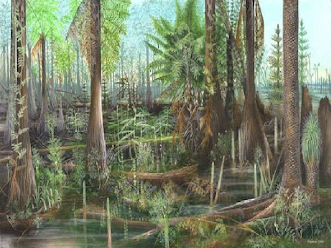CLIMATE WATCH - The Long-Term Carbon Cycle
The formation of one typical coal seam took perhaps 100,000 years of photosynthesis by the first forests.
So much CO2 was removed from the air by the "coal forests" over millions of years in the Late Carboniferous that it caused an ice age (not the more recent one that most people know about)
Such an intense ice age that it almost created a "Snowball Earth" around 300 million years ago:
https://www.pnas.org/doi/10.1073/pnas.1712062114
Oil and gas were also produced hundreds of millions of years ago, and in their case the CO2 was taken up by tiny marine organisms in the oceans. Also over a huge amount of time.
What about non-biological processes that remove CO2 from the air? These are also very slow.
After the PETM warming event around 56 million years ago, it took around 20 million years for CO2 levels to fall sufficiently for glaciation to begin in Antarctica, at the Eocene-Oligocene transition.
The CO2 was mainly taken up by weathering of the newly-rising Himalayas - when large mountain chains are formed they experience slow chemical weathering and this slowly reduces atmospheric CO2, cooling the Earth.
CO2 in rain makes a weak acid, which causes the chemical weathering.
Rivers carry the carbon compounds down to the oceans, where various processes (such as the formation of calcareous shells by organisms) eventually deposit the material on the ocean floor.
This is the long, slow, part of the carbon cycle.

